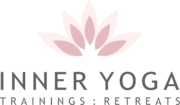Vinyasa Yoga is no doubt one of the most popular styles of yoga today in the West, as is seen in the popularity of Inner Yoga Training’s 200 hour Vinyasa Yoga teacher training in Bali. Characterized by asanas (postures) that flow into one another and synchronized with the breath, Vinyasa Yoga is a faster-paced practice in comparison to Hatha Yoga or Yin Yoga. Prior to Vinyasa Yoga, older more traditional lineages of Hatha Yoga consisted of slower-paced and stationary asana practices. Vinyasa Yoga builds strength and flexibility and as a result, has become popular as a form of exercise and is widely shared in yoga studios and gyms. With this amplified emphasis on the physical, it is easy to lose sight of the original intentions and purpose behind Vinyasa Yin Yoga teacher training in Bali.
The name Vinyasa has its origins in Sanskrit, a language of vibrations that Hindu scriptures and ancient Indian texts are written in. It is also the written language of yoga. The term Vinyasa itself is a combination of two Sanskrit words that can be broken down. “Nyasa” has several meanings, including “to place”, “attention”, and “specific order”, while “vi” translates to “specially”. In regards to yoga, Vinyasa is best described as, “to place in a specific way”. Therefore, the emphasis in Vinyasa Yoga is less on the specific asanas, but rather on the weaving together of asana and breath, creating breath movement congruence in a mindful way. There are countless variations of Vinyasa Yoga today that vary in sequences, definitions, styles, and teachers.
Around 200 B.C. Patanjali embarked on the creation of an Eight-Limbed Path that lays out steps toward achieving Enlightenment. The Eight Limbs comprise Yama (restraints or moral disciplines), Niyama (observances), Asana (posture), Pranayama (breathing techniques), Pratyahara (sense withdrawal), Dharana (focused concentration), Dhyana (meditative absorption), and Samadhi (bliss or enlightenment). Vinyasa Yoga bloomed out of Ashtanga Yoga, which is derived from the asana step of the Eight-Limbed Path of Yoga.
Ashtanga Vinyasa as practiced today is based on the teachings of Sri Krishnamacharya who spent years in the Himalayas studying the Ashtanga Yoga system. Sri Krishnamacharya began teaching in Mysore, India in the early twentieth century where he taught a mixture of diverse and more traditional Ashtanga Yoga practices. He taught that transitions between each asana (posture) are just as significant as the specific postures themselves. Ashtanga Vinyasa was the first yoga tradition to place an emphasis on the transitions between poses rather than simply getting into postures and breathing.
Krishnamacharya’s early student Patthabi Jois later evolved these teachings and taught Ashtanga as Ashtanga Vinyasa, which is what the modern Ashtanga practice is known as today. In the practice of Ashtanga Vinyasa Yoga, asanas are woven together with breath, creating breath movement synchronicity. It is a set sequence and a rigid framework of specific asanas and transitions. Ashtanga Vinyasa Yoga is the origin of almost all forms of Vinyasa Yoga – Vinyasa Flow, Power Yoga, and yoga flow styles that exist today. While much of the Vinyasa Yoga taught today is based on the physical practice of asana, its origins in the Eight Limbed path encompass so much more.
Modern vinyasa yoga is perhaps best described as a freestyle Ashtanga vinyasa that disregards the rigid structure laid out by Pattabhi Jois in the Ashtanga Vinyasa series. Vinyasa has no set sequence or guru, rather it is fluid and free-flowing in its nature. Because of this, its structure and teaching are open for interpretation and individualized style, both in practice and teaching. You can learn more about the practice and teaching of Vinyasa Yoga with Inner Yoga Training’s Vinyasa Yin Yoga teacher training in Bali. There are monthly Certification Courses in 2023.

